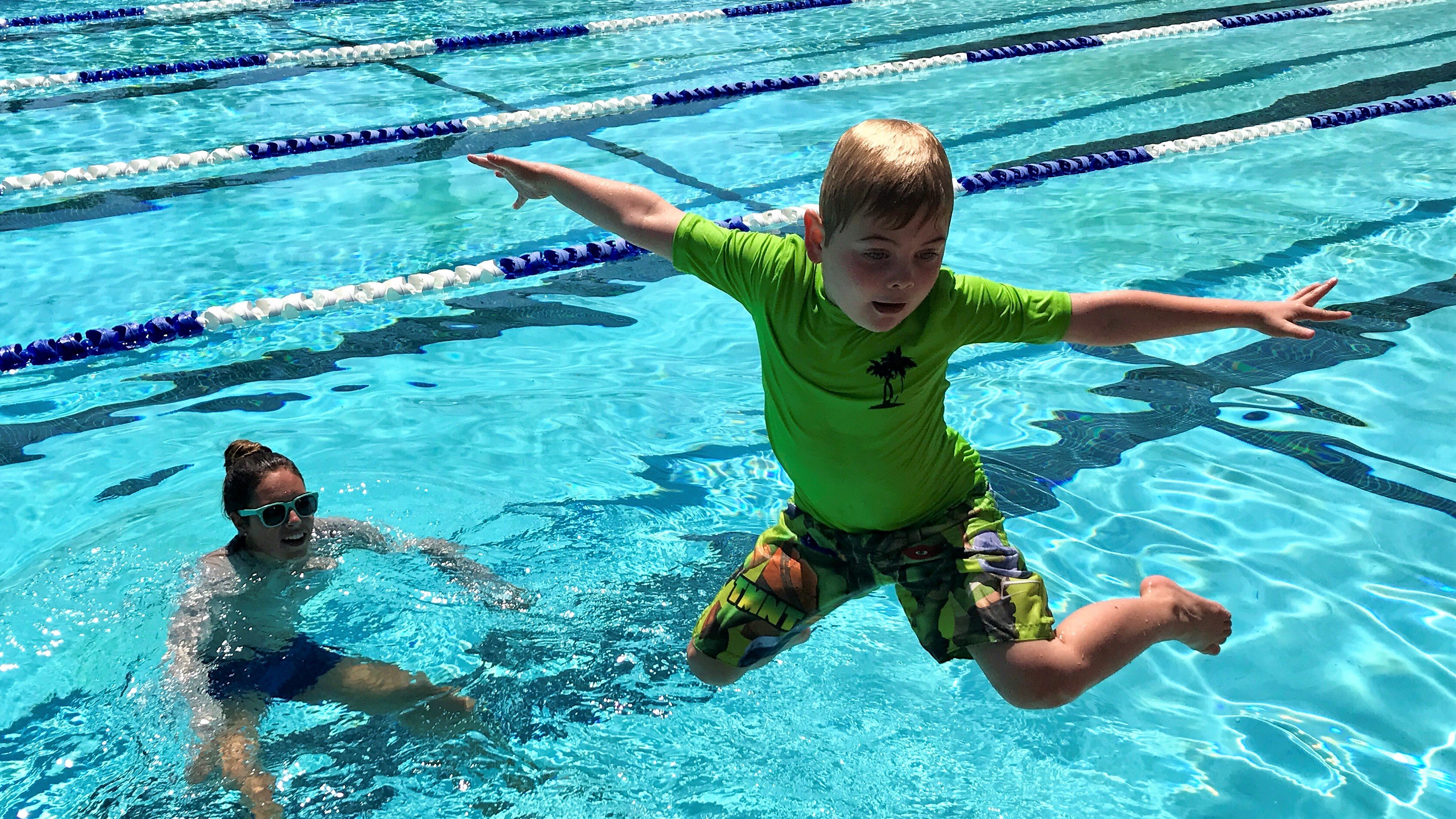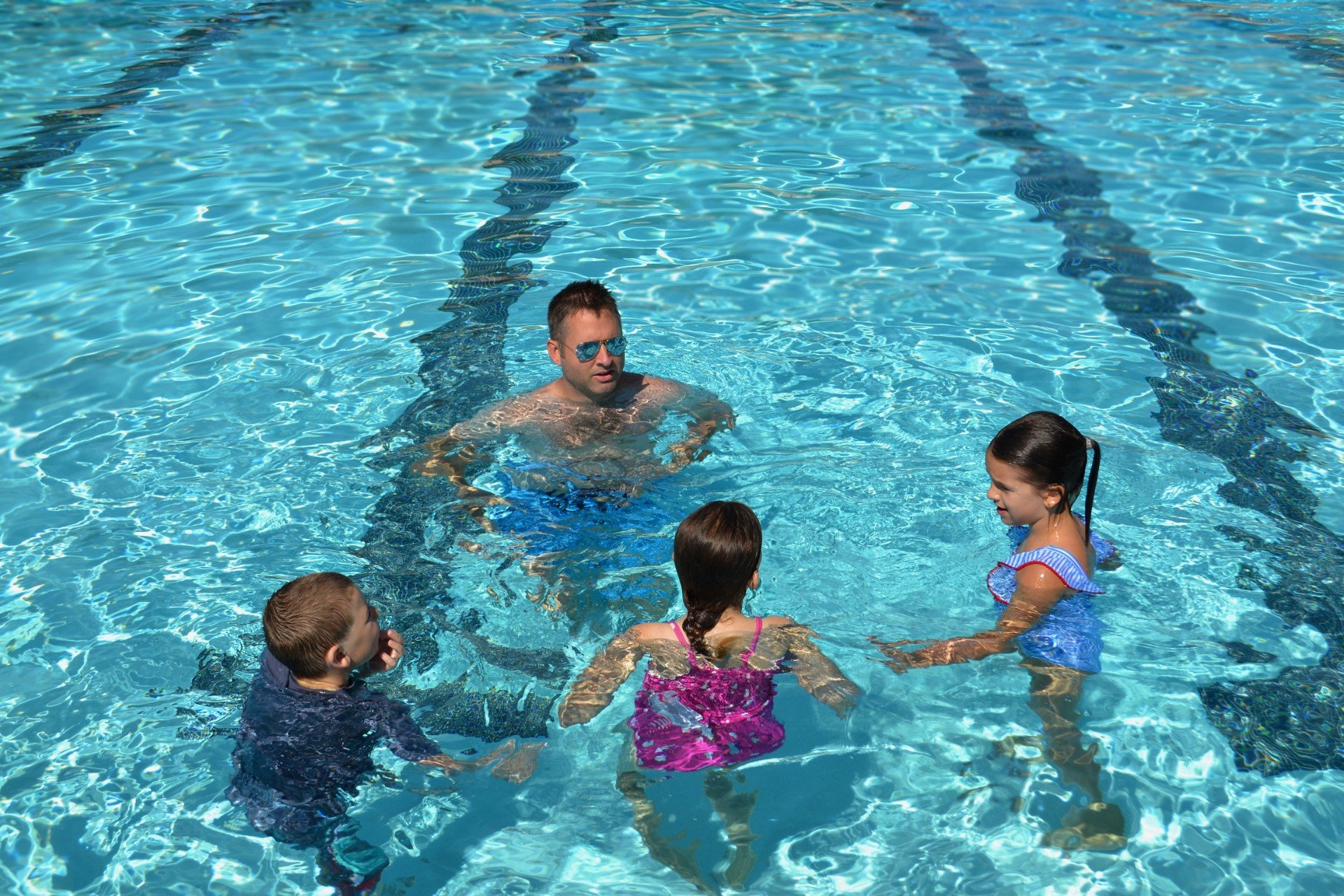All Posts
How to Help Your Child Get to the Next Swim Level
Kikemonk | April 9 2019 | , choosing the best swim program, Swim Tips, Swimming lessons
Here at Premier Aquatics, the success of each and every swimmer is very important to us. Our level-organized lessons are built to strengthen every child’s technique, no matter their past water experience, and help them learn and grow to the best of their ability. Besides training our swimmers to be water safe, our goal is to teach them the skills they need to get to the most advanced levels of swim. Sometimes, it may be a bit confusing as to why your swimmer hasn’t leveled up yet. If you’re interested in getting them to the next level, here are four steps to help you:

1. Know the Lessons and Skills
Each of the six swim levels has a specific set of skills the swimmers work on. Once the skills in that level are mastered, they can ring the graduation bell and move up a level.
Safety Swimming
- Level 1 – Jellyfish
- Goal: Swimmers will learn how to put their face in the water on their own and glide to an instructor unassisted.
- Skills-
- Hold Your Breath
- Assisted Back Float
- Glide
- Level 2 – Tadpole
- Goal: Swimmers will learn to roll onto their back, float unassisted, and kick their legs properly.
- Skills-
- Kicking
- Back Float
- Glide Roll Swim
Technique Swimming
- Level 3 Minnow
- Goal: Swimmers will learn a perfect side breath for freestyle and the importance of maintaining momentum.
- Skills-
- Arm Lead Side Breath
- Pull to Breath
- Backstroke Kick
- Level 4 Guppy
- Goal: Swimmers will learn to swim a full lap freestyle and backstroke.
- Skills-
- Assisted Backstroke
- Freestyle
- Sitting Dive
- Level 5 Lionfish
- Goal: Swimmers will learn butterfly and breaststroke kick and begin to work on endurance swimming.
- Skills-
- Breaststroke Kick
- Butterfly Kick
- Backstroke
- Kneeling Dive
- Level 6 Dolphin
- Goal: Swimmers will learn all 4 competitive strokes and master diving.
- Skills-
- Butterfly
- Breaststroke
- Standing Dive
Familiarizing yourself with the skills your child is learning can help you understand the goals they are reaching for. With this information, you can offer advice as to what they should be working on at home.
2. Talk to Your Instructor
Our instructors are amazing at assessing each swimmer individually and seeing their strengths and weaknesses. Just like you, they are invested in your child and want to see them succeed; never hesitate to ask them questions about where your swimmer is at. They are the best person to get in contact with if you want to know the swim skills your child needs to work on.
3. Pay Attention to Lessons
Our coaches and instructors are very familiar with the exercises that teach swimmers the skills they need; by watching the lessons and observing the specific activities the instructor is doing, you can get ideas for you and your swimmer to do at home – as well as see where your kiddo might need some extra practice. Watching the methods our coaches use to teach will help you better understand the process as a whole.
4. Practice at Home!
The last and most crucial step Рpractice makes perfect. Once you understand the skills your swimmer is learning, what specific areas they need to work on, and some ideas on how to help, you are ready to practice at home. Some swimmers learn faster than others, and it’s important to remember that that’s okay! No matter the skill level or learning speed, everyone can always use more practice. Continuously working with them will not only boost their skill level, but their confidence as well. So, set aside some time, prepare some activities, and practice, practice, practice!

Follow these steps and you should see steady improvement in your swimmer, getting them closer and closer to leveling up!
